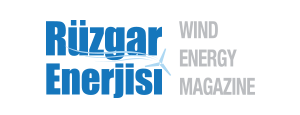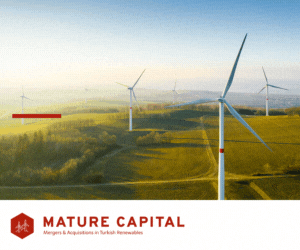Turbine Blades
Top seven issues that wind turbıne blade monitoring can help detect

As renewable energy solutions replace traditional power systems, wind turbine installations have expanded worldwide. The falling cost of turbine equipment coupled with design advancements is driving many organizations to utilize renewable energy. A recent report by the Global Wind Energy Council forecasts 235 gigawatts of new offshore wind capacity will be installed over the next decade.
The Challenges of Inspecting Turbine Blades
While wind turbines are a cost-effective and sustainable energy solution, monitoring and diagnosing blade damage is often a challenge. Harsh environmental conditions can accelerate blade wear and tear, which is often difficult to detect. Some wind farms may inspect blades every year, while others inspect only 33% or 25% of their fleet annually, leaving large intervals gaps for defects to grow. By then, the damaged blades may need extensive repairs that involve costly materials and the possibility of bringing the blade to the ground, which translates to extended downtimes.
Offshore turbines are particularly susceptible to inspection and repair delays. This is due to their positioning in areas that are not easily accessible. Such areas also experience unpredictable weather conditions which further delay inspections, repairs, and maintenance.
Detecting Defects Through Acoustic Emission
Since many small-scale defects are invisible to the naked eye, turbine blades require an efficient, real-time monitoring system to detect issues before they turn into costly malfunctions. One innovative method to detect damage uses acoustic emission (AE) by tracking the blades’ acoustic signals during operation.
AE technology uses a combination of sensors and a central monitoring system to detect blade damage. These sensors listen for the energy released by the blades in the form of acoustic sound waves and transmit this data back to the monitoring portal. The sensors capture blade condition data in formats such as hit-based, average signal level (ASL), and waveform streaming (WFS).
Depending on the type of signal received, the presence and type of blade damage can be determined. ASL signals, for example, can report impact damage to the blade. Deteriorating conditions are detected by comparing the acoustic signals over time to identify the defect.
How Sensoria™ Technology Detects Blade Damage
The Sensoria wind turbine blade monitoring system utilizes AE technology to measure defect growth over time. In the installation of the system, an acoustic data collection system is installed in the hub, while a sensor is installed inside each turbine blade.
This data received to the acoustic data collection system from the blade sensors is transmitted to the Sensoria Insights web-based portal which is accessible from any location through desktop and mobile devices. The portal is used for real-time notifications for impacts and defects, to track the presence and evolution of damage, analyze trends across sites and specific blades and track AE data to determine if the defects are active or stable. This assists in prioritizing which blades need more immediate attention, and which can be scheduled for service at a later time.
Operators use the information to track defects and prioritize repair without impacting operations. The Sensoria Insights portal enhances data visibility, allowing operators to efficiently identify assets with recent events or active defects. Upon identification of a new or active defect, Sensoria Dispatch enables a rapid, hands-on inspection or repair to the affected blade.
Blade Issues Detectable Through Monitoring
The MISTRAS Sensoria blade monitoring system functions 24/7/365 to remotely detect defects on blade components. The system detects the following top issues:
- Cracking: Cracks can occur over long periods of time or in extreme conditions. If left undetected, they may lead to catastrophic blade failure.
- Lightning strikes: Wind turbines are easy targets for lightning strikes. With Sensoria monitoring, detection of a lightning strike is captured by a large amplitude and energy signal and displayed on the Sensoria web application for quick identification.
- Blade skin ruptures and perforations: Lightning strikes, fatigue defects, and severe leading edge erosion are the primary causes ruptures or perforations. Acoustic monitoring can identify these issues allowing them to be addressed before they increase in size and adversely affect performance.
- High energy impacts: When natural elements or foreign objects collide with rotor blades, Sensoria can detect these occurences. The location and severity of damage can be determined and help lead to appropriate decision-making.
- Delamination: Wind turbine blades can experience delamination due to numerous causes. Delaminations can be identified early and before any visual indication through acoustic monitoring, hands on tap testing or ultrasonic inspection. If identified early delamination’s can be quickly and efficiently repaired or monitored for growth.
- Bond line failure: Deterioration of the bond lines may occur overtime between the blade’s structural elements. Sensoria can identify active disbanding allowing for targeted inspection before defect growth.
- Other serial manufacturing defects: A leading cause of blade damage is undetected manufacturing defects. If left unattended, this damage worsens during the stresses of turbine operation. Sensoria is able to flag these defects early so that they can be addressed during the manufacturer’s warranty period.
Maximizing Value & Efficiency with 24/7 Blade Condition Monitoring
Sensoria wind turbine blade technology helps wind turbine owners and operators improve efficiency in the following ways:
Site managers and technicians are able to make more informed maintenance decisions with real-time data obtained from the Sensoria Insights portal. Early identification of damage detection assists with maintenance and repair scheduling before problems worsen.
Tracking historical blade conditions and defects through the Sensoria portal gives engineers greater insights into the overall fleet operation.
Reduces transportation and manpower costs due to fewer trips to remote, harder-to-access turbine locations.
Key Takeaways
Condition monitoring of wind turbine blades is a necessity for their continuous operation. However, periodic physical inspections alone are not enough to prevent catastrophic blade damage. MISTRAS Group’s Sensoria provides an innovative solution to this problem through continuous monitoring for greater insights into blade conditions. By detecting changes in the blades’ acoustic signatures, the solution enables operators to locate and correct issues before they worsen, preventing prolonged, costly downtime.
-

 Events5 years ago
Events5 years agoCanada and Turkey women working in the renewable energy sector in met
-

 Manufacturers of wind turbines5 years ago
Manufacturers of wind turbines5 years agoGE’s Haliade-X 12 MW prototype to be installed in Rotterdam
-

 Operations and Maintenance6 years ago
Operations and Maintenance6 years agoGENBA is on the rise; another milestone passed by in global existence
-

 Genel9 years ago
Genel9 years agoEWT launches the DW61, It’s most efficient and high energy producing wind turbine
-

 Genel9 years ago
Genel9 years agoInternet of things will empower the wind energy power plants
-

 Turbine Manufacturing6 years ago
Turbine Manufacturing6 years agoİğrek Makina focused on developing and producing Machine Tools and Wind Energy Turbines
-

 Energy management systems5 years ago
Energy management systems5 years agoDemand/Supply – Renewable energy with guarantees of origin (GO)
-

 Events5 years ago
Events5 years agoKey Players from 10 Nations will Show Their Strong Positions at APWEE
-

 Manufacturers of wind turbines5 years ago
Manufacturers of wind turbines5 years agoThe Nordex Group receives first order for Delta4000 turbines from the USA
-

 Manufacturers of wind turbines4 years ago
Manufacturers of wind turbines4 years agoENERCON installs E-160 EP5 prototype
-

 Genel8 years ago
Genel8 years agoZorlu energy envisages a bold new future based on renewables
-

 Manufacturers of wind turbines6 years ago
Manufacturers of wind turbines6 years agoENERCON and Lagerwey together develop two new WEC types



